This Clay-colored Thrush, Yigüirro (my gallery link) was still singing after the rains started in April but they are here for sure now, almost every afternoon or evening, and he no longer needs to sing in the rain! 🙂

¡Pura Vida!
This Clay-colored Thrush, Yigüirro (my gallery link) was still singing after the rains started in April but they are here for sure now, almost every afternoon or evening, and he no longer needs to sing in the rain! 🙂

¡Pura Vida!
One of the common birds in my garden is the Rufous-backed Wren, Campylorhynchus capistratus (my gallery link) and here he is in the rain the other day, perched on a dead tree in a neighbor’s yard.

¡Pura Vida!
This tiny little guy is still the self-appointed king of my garden, doing his best to chase other birds away. But I still get the other two species of hummingbirds some, just mostly on the flowers and not the feeders.

My photo gallery for Rufous-tailed Hummingbird, the most often seen hummingbird by me, all over Costa Rica. 🙂
¡Pura Vida!
. . . for the rains to begin. And hopefully that will be any day now! (And maybe before this is posted, since I’m scheduling posts about a week ahead now.) 🙂 The National Bird of Costa Rica, known in English as the Clay-colored Thrush, is I think a handsome bird, even when not singing all day like he does every April. Here are three recent shots of different individuals and you can see more in my Gallery: Clay-colored Thrush, Turdus grayi. 🙂

Another competitor for my little Rufous-tailed Hummingbird who thinks he owns my garden is this Blue-vented Hummingbird, Saucerottia hoffmanni (my gallery link) and I haven’t seen him try to stop this larger deep-blue tailed hummingbird who has also been around my gardens since my first year here. You can read about him on eBird. A tropical bird found only in Costa Rica & Nicaragua with maybe a few strays into Honduras & El Salvador. 🙂 Or see more than 400 observations in Costa Rica on iNaturalist CR.
Here’s two shots recently on my Porterweed flowers. And yes, it is still windy, but these hummers have to eat every few minutes, regardless of the weather! And we all hope for the rains to start any day now and maybe then the winds will disappear! 🙂
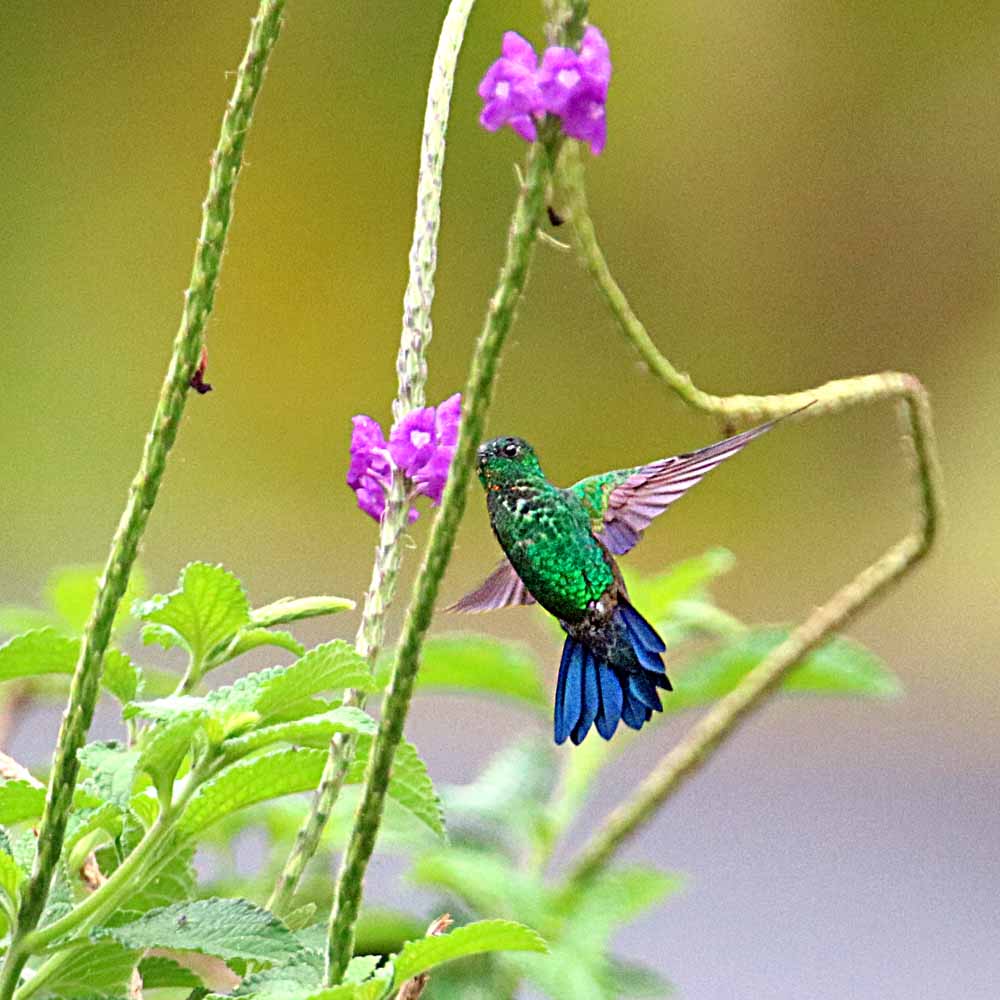
Or it seems that I will do anything for one! 🙂 That is why I like going to the nature lodges where you can get closer to such colorful birds. Well, here are my step by step procedures for one of those many that come near my house (plus waiting for a blue sky!) 🙂 . . .
Continue reading “Anything for a Parrot Pix!”I never claim to be an authority on anything in nature, but my deductions of this photo on K’s fence the other day lead me to believe that it is a Juvenile Cinnamon-bellied Saltator. The three Saltators are the only birds this size with a “seedeater bill” (short/stubby fat) that also have the white eyebrow and little white line under the eye. Thus my deduction that it is a Saltator and because just 8 days ago I shared a photo of an adult Cinnamon-bellied Saltator (most common saltator here), I believe this one may be the offspring of that adult.
The Merlin AI identifier (eBird) is very good, but not on juveniles like this, and it just said it was “unable to identify” and the iNaturalist AI (also very good) said “not confident to identify” but then went on to give it’s first choice of “possible” species as a double-collared seedeater (Sporophila caerulescens) and that was also the first choice of Google Lens, but that species is South American and never sighted in Costa Rica, plus it does not have a white eyebrow and in my opinion not a good option! 🙂
I did find some juvenile Cinnamon-bellied Saltators online similar to this, and yes, many are darker or grayer than this one, but a few similar. Whew! Identification can be a lot of work! 🙂 So here it is, whatever it is . . .
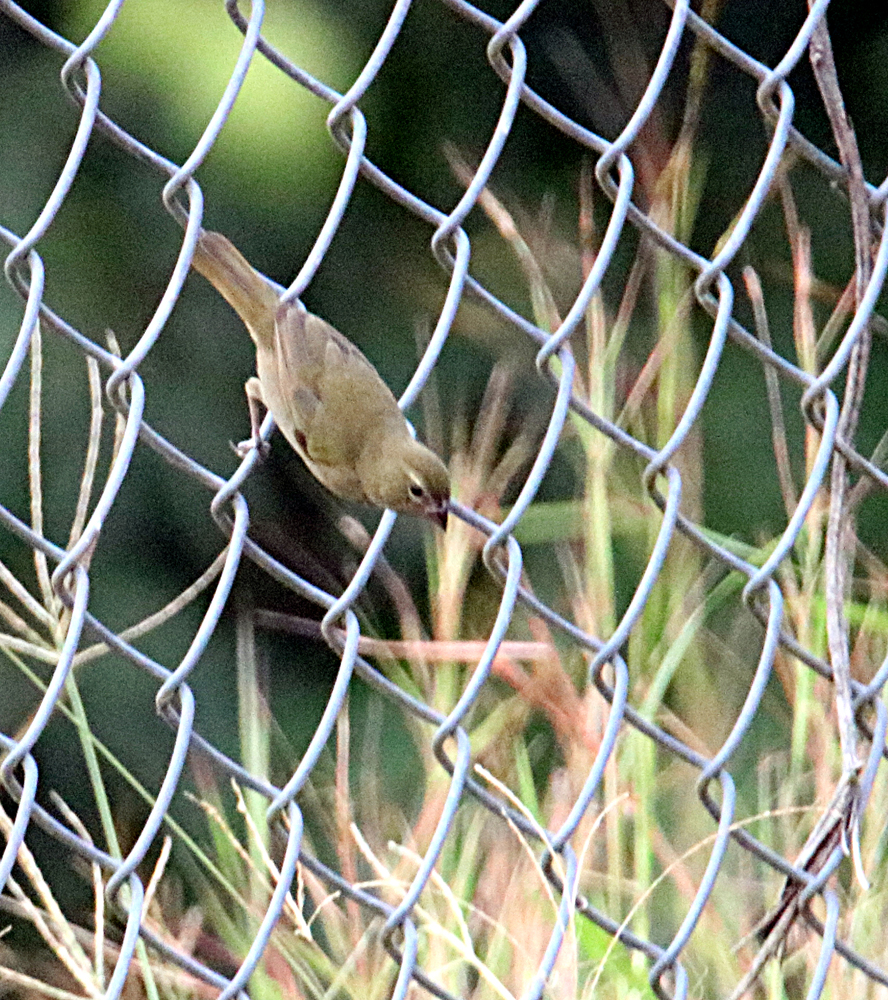
See all of my photos of this species in Cinnamon-bellied Saltator Gallery which, by the way, was formerly called the “Grayish Saltator.”
¡Pura Vida!
I’ve seen this Streaked Flycatcher, Myiodynastes maculatus (eBird link) in five other locations in Costa Rica, but this is a first for my garden! You can see my other sightings in my Streaked Flycatcher GALLERY. This species lives all over both Central and South America.

When K had his gardener plant a Zinnia bed on the hillside just above my roof, I got my gardener to add a bench for viewing the many butterflies there. Now with the high winds continuing and me seeing very view birds from house-level, I have been trying the hillside bench and that is where I got the Gray Hawk and all of the last few days’ birds. I even got a Red-lored Parrot one day! But because he was near the top of the far hill, not a very good photo. I may or may not share it later. 🙂
Here is a gallery with three views from the bench that you email receivers may need to go online to properly see the left-to-right sequence (click post title above to go online). The email version does funny things with the photos sometimes. 🙂
CLICK IMAGE TO ENLARGE and then click through a manual slideshow . . .
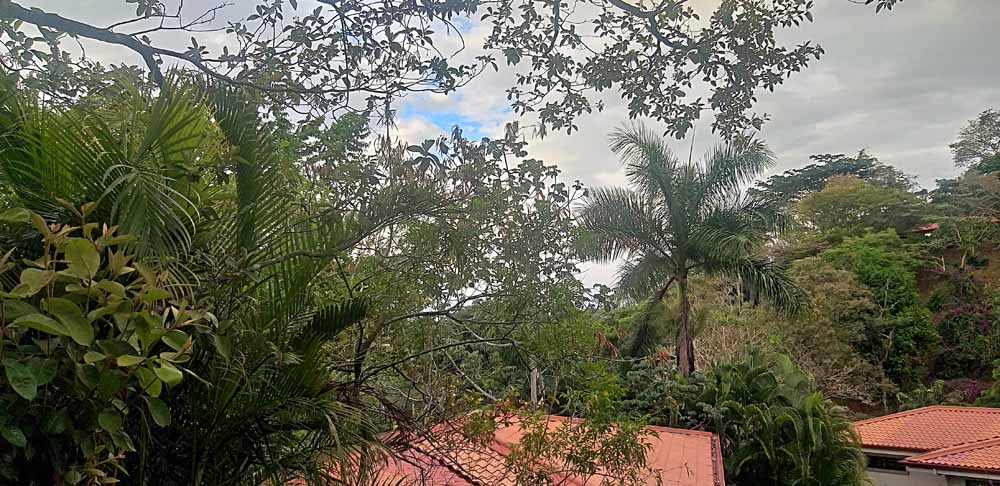

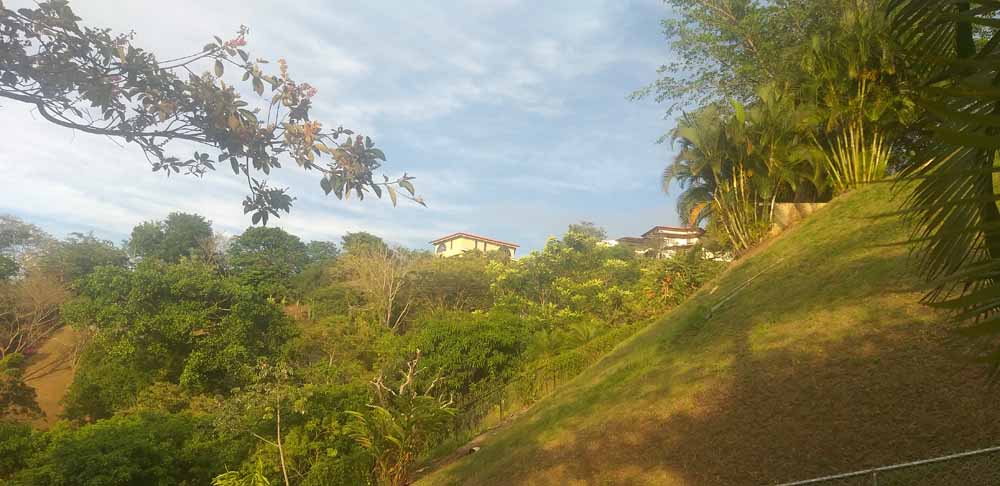
More bird photos coming from this new birding spot! 🙂 So far I’ve shared these: a Gray Hawk, a Cinnamon-bellied Saltator, a Stripe-headed Sparrow, a Great Kiskadee and tomorrow a Streaked Flycatcher and maybe later the Red-lored Parrot (grainy photo). A lot more variety than what I was seeing from my terrace rocking chair! 🙂 And though a little earlier, this was the spot from where I got that cool photo of two Keel-billed Toucans perched with a Chachalaca on the hill behind George’s house! 🙂 Right now I’m not scheduled to travel until the first week of July, so this is my nature photography mirador! And who knows, before long, eBird just might list it as one of the “Birding Hot Spots” in Costa Rica! 🙂
¡Pura Vida!
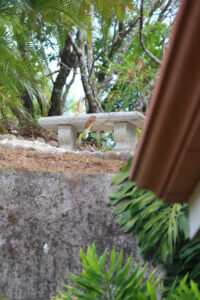
Though it is still too windy for many birds, they have to eat and late afternoon is their last chance of the day. Two of these Stripe-headed Sparrows – Peucaea ruficauda (eBird link) were moving from a tree to the fence and to the ground, looking for possibly seeds or insects or worms. It is another purely Central American bird found from Costa Rica to Mexico. See more of my photos of this bird in my Stripe-headed Sparrow GALLERY. You will note there that I’ve seen this sparrow only one other time here in Atenas (2020) and once in Guanacaste at Rincon de la Vieja (2019). Thus not one of my regulars! 🙂 And for you birders here in Costa Rica, yes, he is very similar to the Black-striped Sparrow seen on both slopes of Costa Rica (while this one is only on the Pacific Slope), BUT with multiple obvious physical & color differences, making both easy to ID. 🙂

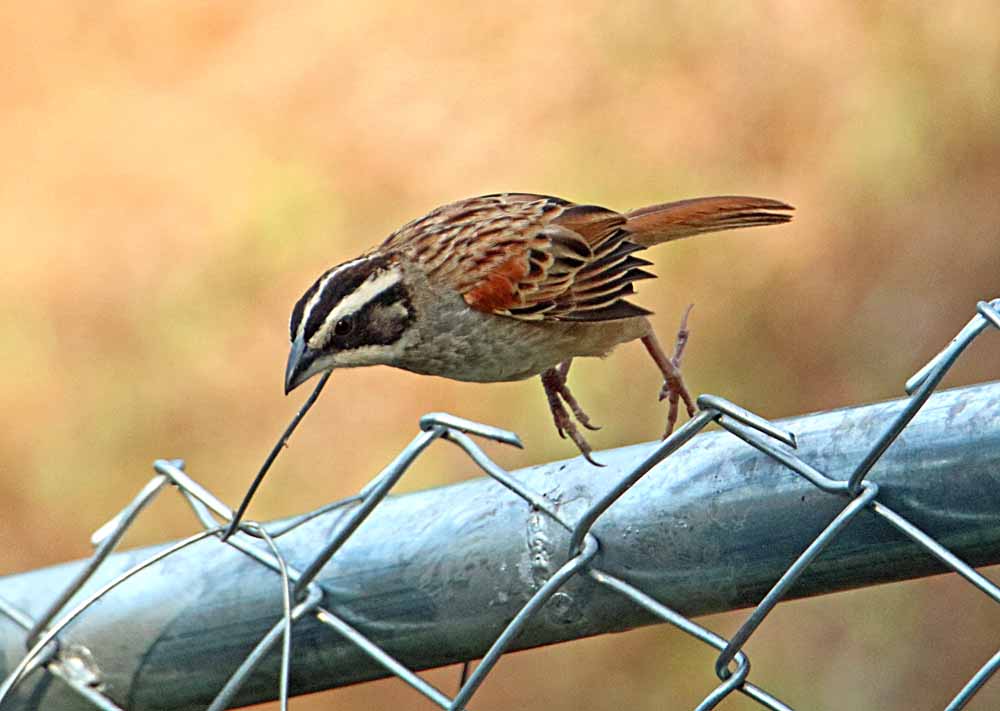
¡Pura Vida!